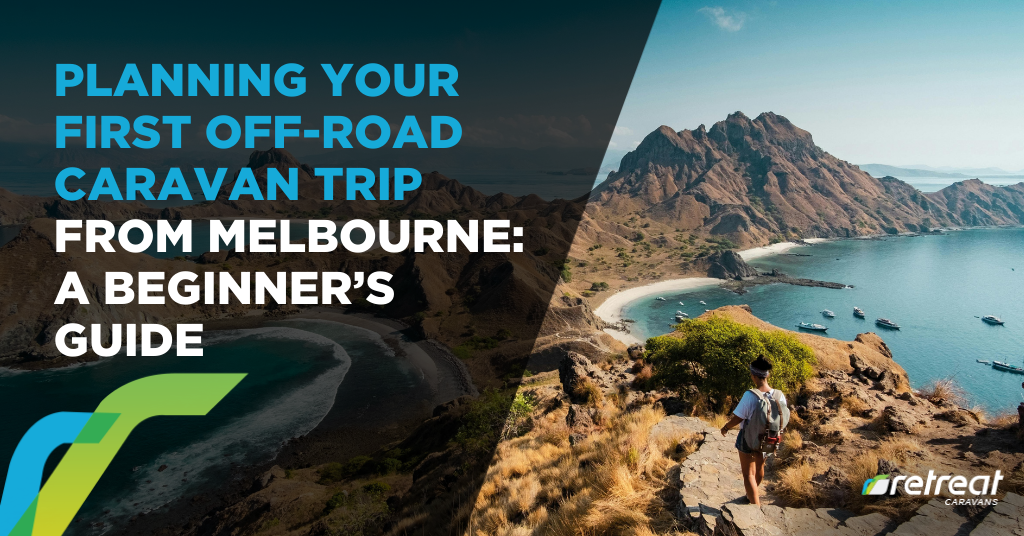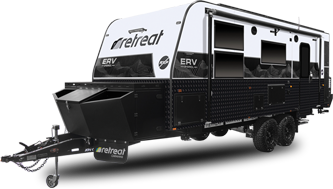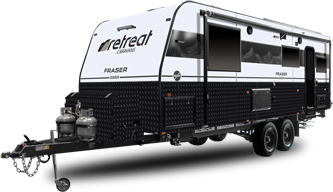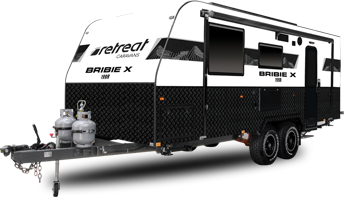
Planning Your First Off-Road Caravan Trip from Melbourne: A Beginner’s Guide
Australia is made for adventure, and an off-road caravan trip is one of the best ways to explore it. Whether you want to see rugged mountains, quiet beaches, or remote bushland, a caravan gives you freedom. But hitting the road without the right preparation can lead to stress instead of fun.
From choosing the right luxury caravans to picking a route that matches your experience level, planning makes all the difference. This guide breaks down everything you need to know, from vehicle checks to packing essentials, so you can start your journey with confidence.
Choosing the Right Off-Road Caravan
Off-road caravans are built to handle rough terrain, making them different from standard caravans. They have reinforced chassis, upgraded suspension, and off-grid capabilities. But not all models are the same, so picking the right one is key.
Here’s what to look for:
- Suspension: Independent suspension handles bumpy tracks better than leaf springs.
- Chassis & Build: A strong steel chassis and reinforced frame prevent damage on rough roads.
- Towing Capacity: Make sure your vehicle can tow the caravan’s full weight, including gear.
- Off-Grid Features: If you plan to camp away from powered sites, off grid caravans with solar panels, large water tanks, and lithium batteries are essential.
Think about how long you’ll be off-grid, what terrain you’ll tackle, and how much space you need. A lightweight caravan might be easier to tow, but a larger one offers more comfort.
Picking the Best Route for Your Skill Level
Not all off-road tracks suit beginners. Some require experience with tricky terrain, deep water crossings, or steep climbs.
For your first trip, stick to routes with maintained dirt roads, basic facilities, and plenty of campsites. Here are two beginner-friendly options:
- The Great Ocean Road & Otway National Park – Start with scenic coastal drives, then head inland to explore rainforest trails. Tracks in the Otways offer a mix of gravel roads and mild off-road conditions.
- Grampians National Park – A mix of sealed and unsealed roads with spectacular mountain views. Perfect for testing an off-road caravan in a safe environment.
For more ideas, the best coastal off-road caravan spots near Melbourne highlight some epic scenic locations that are great for beginners.
Preparing Your Tow Vehicle
Your 4WD or tow vehicle must be up for the challenge. Regular maintenance is important, but off-road trips require extra checks.
- Tyres: All-terrain tyres provide better grip on dirt and sand. Lowering tyre pressure improves traction.
- Brakes & Suspension: Your vehicle’s brakes should handle the extra weight. Heavy-duty suspension reduces stress on the chassis.
- Snorkel & Recovery Gear: A snorkel protects your engine in water crossings. Recovery gear like snatch straps, a winch, and traction boards help if you get stuck.
- Weight Distribution: Load the caravan evenly. Too much weight at the rear can cause swaying.
If you’re heading to remote areas, carry extra fuel, a satellite phone, and detailed maps. If budget is a concern, budget-friendly off-road caravanning destinations in Victoria offer affordable yet rewarding travel experiences.
Essential Gear for an Off-Road Caravan Trip
Packing smart makes life on the road easier. While you don’t need everything, some essentials improve comfort and safety.
Must-Have Gear:
- Navigation Tools: GPS, paper maps, and a compass in case of tech failures.
- Power & Water: Portable solar panels, extra batteries, and large water storage.
- Cooking Equipment: Gas stove, BBQ plate, and fire-safe cookware.
- Camping Accessories: Fold-out awning, chairs, and a table for outdoor setups.
- First Aid Kit: Include snake bite bandages and emergency medications.
Recovery & Safety Equipment:
- Tyre Repair Kit & Air Compressor – Fix punctures and adjust tyre pressure for different terrains.
- Recovery Tracks & Snatch Straps – Help get out of mud, sand, or deep ruts.
- UHF Radio – Essential for areas with no phone service.
A well-packed caravan means fewer surprises on the road. Test your gear before leaving to avoid issues in remote locations.
Understanding Road Conditions & Driving Techniques
Driving an off-road caravan is different from towing on highways. Dirt roads, sand, and rocky tracks require skill and patience.
Tips for Off-Road Driving:
- Slow Down: High speeds on gravel can cause loss of control.
- Use 4WD When Needed: Engaging low-range helps in steep or slippery conditions.
- Corner Wide: Caravans have a wider turning radius, so take corners carefully.
- Brake Gently: Sudden braking on loose surfaces can cause skidding.
Check weather updates before heading out. Heavy rain can turn dirt roads into mud pits, making travel difficult or impossible.
Finding the Best Campsites & Facilities
Once you’re on the road, knowing where to stop makes the trip smoother. Some campsites offer full amenities, while others are completely off-grid.
Popular campsite options include:
- National Park Campgrounds: Basic facilities, great scenery, and affordable fees.
- Free Camping Areas: Remote spots for self-sufficient travellers.
- Caravan Parks: More amenities like power, water, and showers.
Research sites ahead of time to find a mix of comfort and adventure. Apps like WikiCamps and CamperMate help locate campsites with real reviews.
FAQs
1) What is the best time of year for an off-road caravan trip?
The best time for an off-road caravan trip depends on your destination and weather conditions. Spring (September–November) and autumn (March–May) are ideal because they offer mild temperatures, making travel more comfortable. During these seasons, the risk of extreme heat or heavy rainfall is lower, and popular destinations are less crowded compared to peak summer holidays.
Summer (December–February) can be challenging, especially in inland and outback areas where temperatures often exceed 40°C. Heat can strain both vehicles and travellers, making long journeys exhausting. If you plan to travel in summer, coastal routes with sea breezes are a better choice.
Winter (June–August) can bring heavy rains, especially in Victoria and Tasmania, making dirt roads muddy and difficult to navigate. Some national parks and off-road tracks may even close due to dangerous conditions. Checking local weather updates and road conditions before your trip is essential for a smooth adventure.
2) Do I need a special licence to tow an off-road caravan?
In Australia, you don’t need a special licence to tow an off-road caravan, but you must comply with your standard driver’s licence conditions. Most car licences allow towing, but weight limits apply depending on your vehicle and state regulations. Always check your licence class and ensure your vehicle’s towing capacity matches the caravan’s weight.
While no formal training is required, towing an off-road caravan involves different skills compared to driving a regular vehicle. A towing course can be highly beneficial, especially for beginners. These courses teach safe reversing, weight distribution, braking techniques, and how to handle different terrains.
If you plan to tow a caravan exceeding a Gross Vehicle Mass (GVM) of 4.5 tonnes, you may need a higher-class licence. Always review your state’s road authority guidelines before heading off. Being confident in your towing skills ensures a safer and more enjoyable trip.
3) How much fuel should I carry for an off-road trip?
Fuel requirements depend on the length of your trip, the terrain, and your vehicle’s fuel consumption. For short off-road trips near towns or fuel stations, standard fuel levels may be enough. However, for remote trips, carrying extra fuel is crucial to avoid getting stranded.
A good rule is to calculate your fuel consumption per 100km and then add at least 20-40 litres in jerry cans for emergencies. In soft sand, steep tracks, or mud, vehicles burn more fuel than on highways. If you’re travelling through areas with no fuel stations for hundreds of kilometres, consider long-range fuel tanks or additional storage.
Always store fuel in approved jerry cans, secure them properly, and keep them away from direct sunlight. Checking your route for fuel stops and using fuel consumption apps can also help plan efficient refuelling points, reducing the risk of running low.
4) Can I take an off-road caravan on the beach?
Taking an off-road caravan on the beach is possible, but it depends on the location and local regulations. Some beaches allow vehicle access, while others have strict rules to protect the environment and ensure safety. Always check council or national park guidelines before driving onto the sand.
If permitted, proper preparation is key. Lowering your tyre pressure to around 15-20 PSI improves traction on soft sand and prevents bogging. Engaging 4WD mode helps maintain control, while keeping a steady speed and avoiding sudden braking reduces the risk of getting stuck.
Beach driving can be unpredictable due to tides. Travelling at low tide is safer, as wet sand near the waterline is firmer than dry, loose sand further up the beach. Avoid driving on dunes, as they can collapse under heavy weight. Carrying recovery gear like traction boards, a snatch strap, and a shovel is essential in case you need to get unstuck.
5) What should I do if I get stuck?
If your off-road caravan gets stuck, the first step is to stay calm and assess the situation. Panicking and accelerating aggressively can dig your tyres deeper into the terrain, making recovery harder. Instead, gently rock the vehicle back and forth by shifting between drive and reverse to gain traction.
If that doesn’t work, use recovery gear. Traction boards placed under the tyres can provide grip on soft sand or mud. A snatch strap and another vehicle can help pull you free if you’re travelling with others. In extreme cases, a winch attached to a secure anchor point can assist recovery.
If you’re in a remote area and unable to self-recover, use a UHF radio or satellite phone to call for help. Always inform someone of your travel plans before heading off-road so that if you don’t check in, they can raise the alarm. Being well-prepared makes recovery easier and ensures a safer trip.
Start Your Off-Road Adventure with the Right Caravan
A well-planned off-road caravan trip is one of the best ways to see Australia. By choosing the right caravan, packing smart, and preparing your vehicle, you’ll enjoy the freedom of off-grid travel without stress. Whether you’re exploring rugged mountains or remote beaches, the key is preparation.
For a reliable off-road caravan built for adventure, Retreat Caravans offers high-quality models designed for tough conditions. See below for our full range of caravans, all carefully designed with you in mind:







